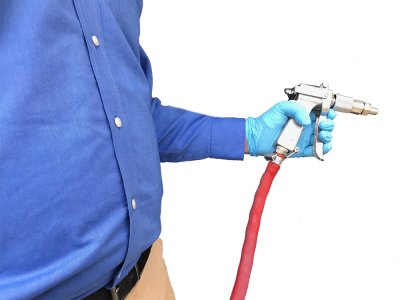Yellow Jackets
Raccoon Trapping and Removal
Yellowjacket or (Yellow jacket) are sometimes mistakenly called “bees” (as in “meat bees”), given that they are similar in size and sting, but yellowjackets are actually wasps. Most of these are black and yellow like the eastern yellowjacket but some are black and white like the bald-faced hornet. They can be identified by their distinctive markings, their occurrence only in colonies, and a characteristic, rapid, side-to-side flight pattern prior to landing. All females are capable of stinging. Yellowjackets are important predators of pest insects.
A typical yellowjacket worker is about 12 mm (0.5 in) long, with alternating bands on the abdomen; the queen is larger, about 19 mm (0.75 in) long (the different patterns on their abdomens help separate various species). Workers are sometimes confused with honey bees, especially when flying in and out of their nests. Yellowjackets, in contrast to honey bees, have yellow or white markings, are not covered with tan-brown dense hair on their bodies, do not carry pollen, and do not have the flattened hairy hind legs used to carry it.
The species Dolichovespula and the bald-faced hornet, tend to create exposed nests in trees or on structures above the ground. Vespula species, in contrast, build concealed nests, usually underground.
Yellowjacket nests usually last for only one season, dying off in winter. The nest is started by a single queen, called the “foundress”. Typically, a nest can reach the size of a basketball by the end of a season.
Diet
The diet of the adult yellowjacket consists primarily of items rich in sugars and carbohydrates, such as fruits, flower nectar, and tree sap. Larvae feed on proteins derived from insects, meats, and fish, which are collected by the adults, which chew and condition them before feeding them to the larvae. Many of the insects collected by the adults are considered pest species, making the yellowjacket beneficial to agriculture.
In late summer, foraging workers pursue other food sources from meats to ripe fruits, or scavenge human garbage, sodas, picnics, etc., as additional sugar is needed to raise the next generation’s queens.
Life Cycle
Yellowjackets are social hunters living in colonies containing workers, queens, and males (drones). Colonies are annual with only inseminated queens overwintering. Fertilized queens are found in protected places such as in hollow logs, in stumps, under bark, in leaf litter, in soil cavities, and in man-made structures. Queens emerge during the warm days of late spring or early summer, select a nest site, and build a small paper nest in which they lay eggs. After eggs hatch from the 30 to 50 brood cells, the queen feeds the young larvae for about 18 to 20 days. Larvae pupate, then emerge later as small, infertile females called workers. Workers in the colony take over caring for the larvae, feeding them with chewed up meat or fruit. By midsummer, the first adult workers emerge and assume the tasks of nest expansion, foraging for food, care of the queen and larvae, and colony defense.
Whenever possible, leave yellow jacket nests alone and let them continue to prey on pest insects; the ensuing cold weather will cause the colony to die off. However, if the nest is in a well-traveled area and poses a risk, you may need to take action. The easiest and safest the option is to hire a professional. If you’re determined to do it yourself, know that the likelihood of getting stung is high. You can minimize the risk by hanging an imitation nest on your deck or patio. It acts as a natural deterrent for yellow jackets, wasps and other flying pests.
How to Get Rid of Yellow Jackets
- Getting rid of yellow jackets is fairly straightforward: Keep trash containers sealed and try to minimize unattended food and soda at outdoor gatherings. Clean up any spills or dropped food immediately. Yellow jacket traps are efficient and can be hung from tree limbs or other structures where you plan on have an outdoor event. They can be baited with wet cat food or old, rotting chicken and are mixed with a powerful insecticide that kills the wasps soon after ingestion.
- Find any nests and eliminate them. This is dangerous and is best left to professional exterminators. The risk from serious injury or death is substantial if you do not know what you are doing.
- Call Jarrod’s Pest Control for a free inspection and estimate
REQUEST A QUOTE

100% Satisfaction
There is a reason our work is guaranteed…we do it right. If you would ever have a problem with pests while we are in charge of your pest control, we will work until the problem is resolved. Our contracts provide you with quarterly service and we will take care of any problems that may happen to arise between visits.
We Guarantee It!

Request Free Pest Inspection
EMERGENCY SERVICE AVAIALBLE
Request Free Pest Inspection
EMERGENCY SERVICE AVAIALBLE


